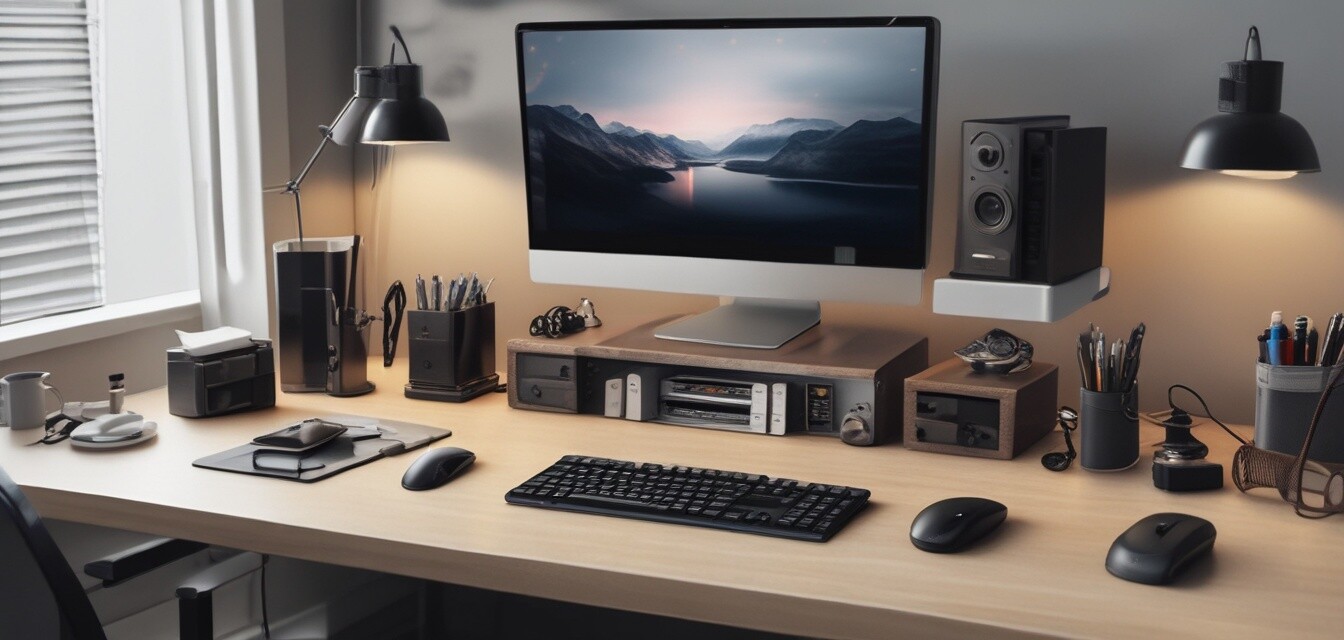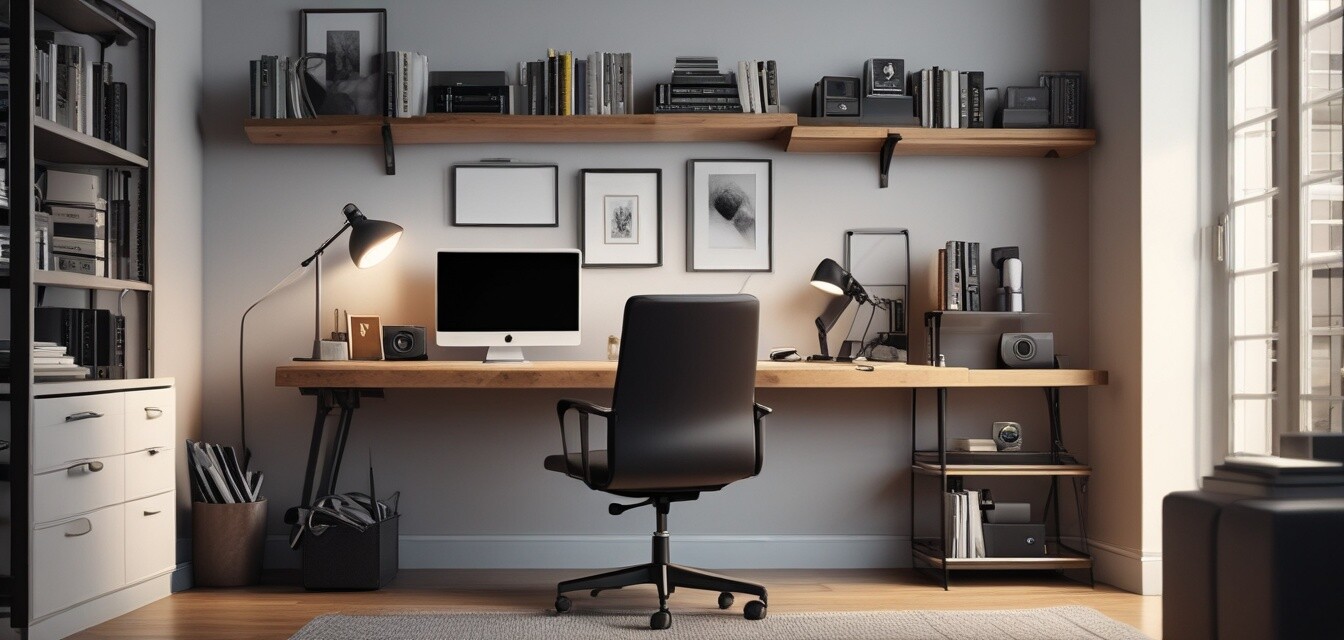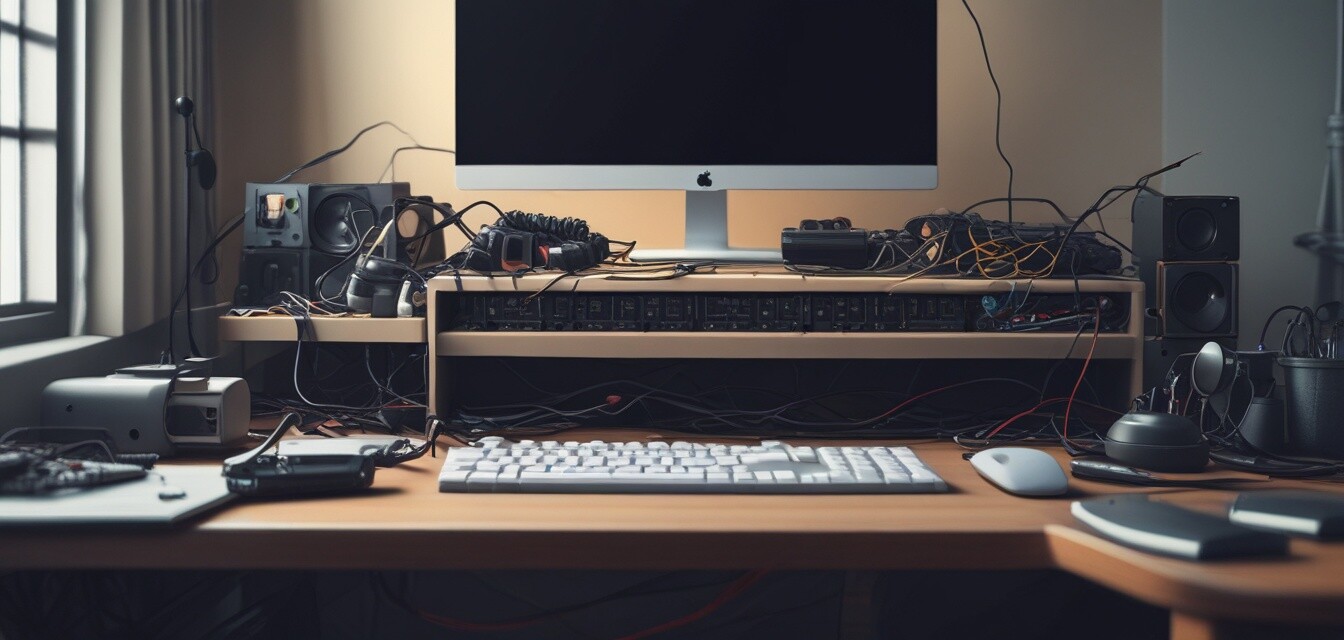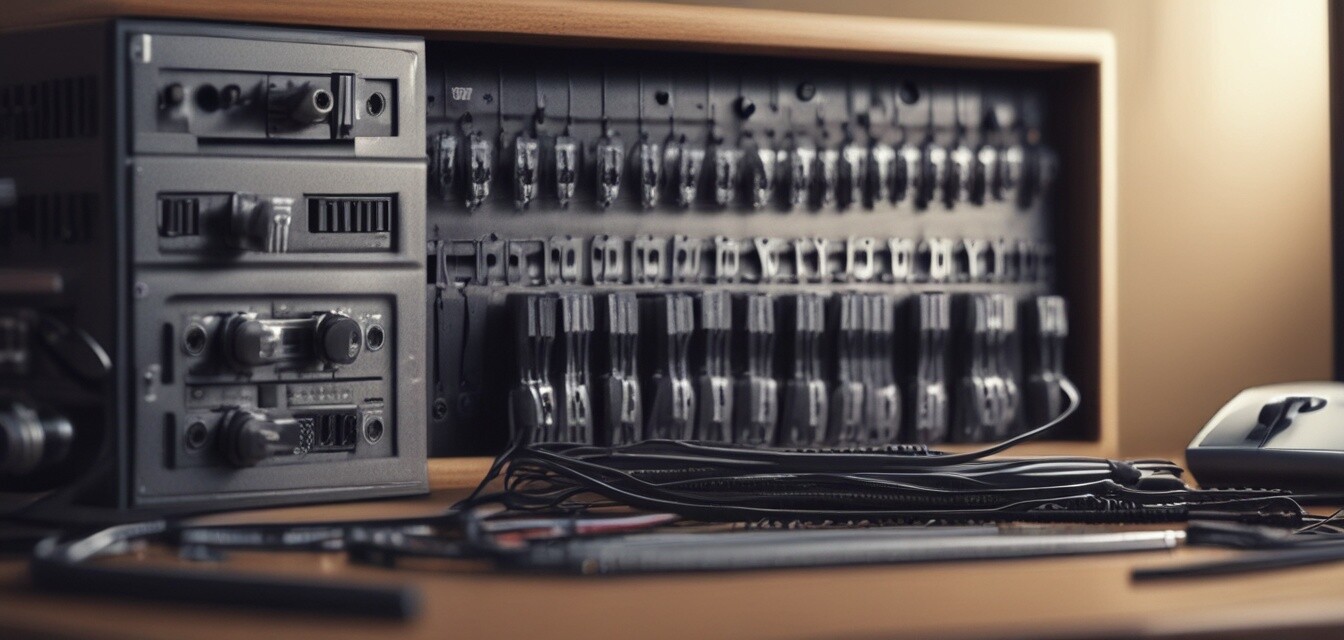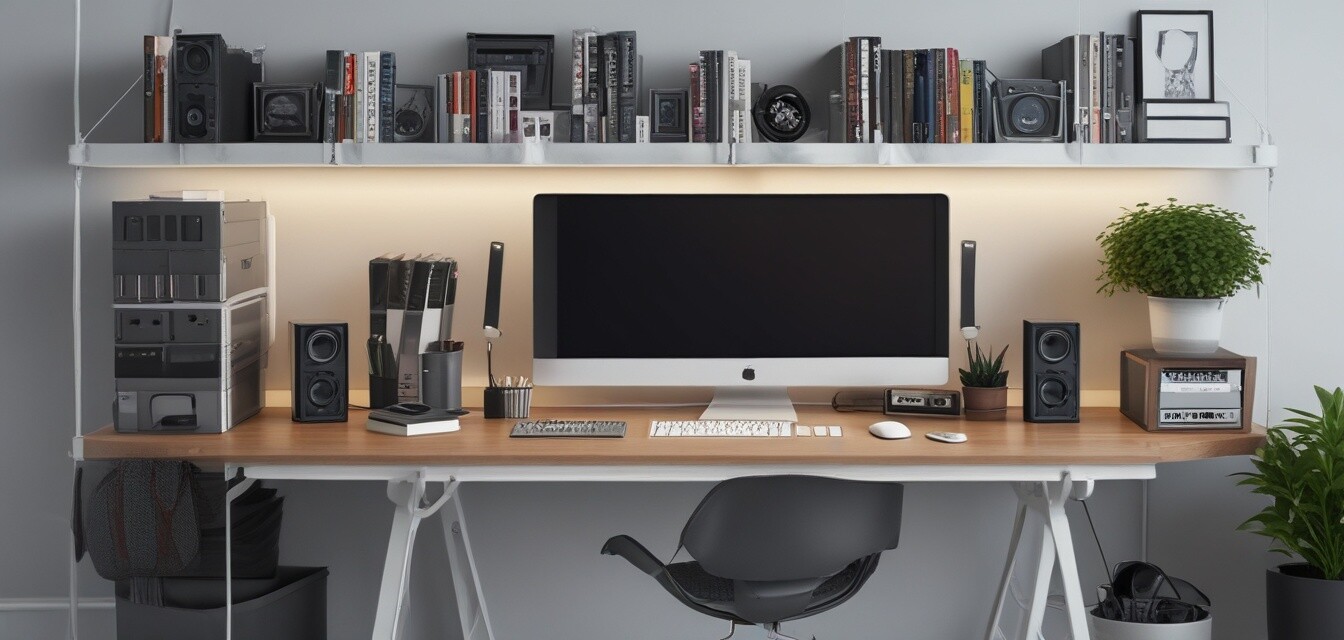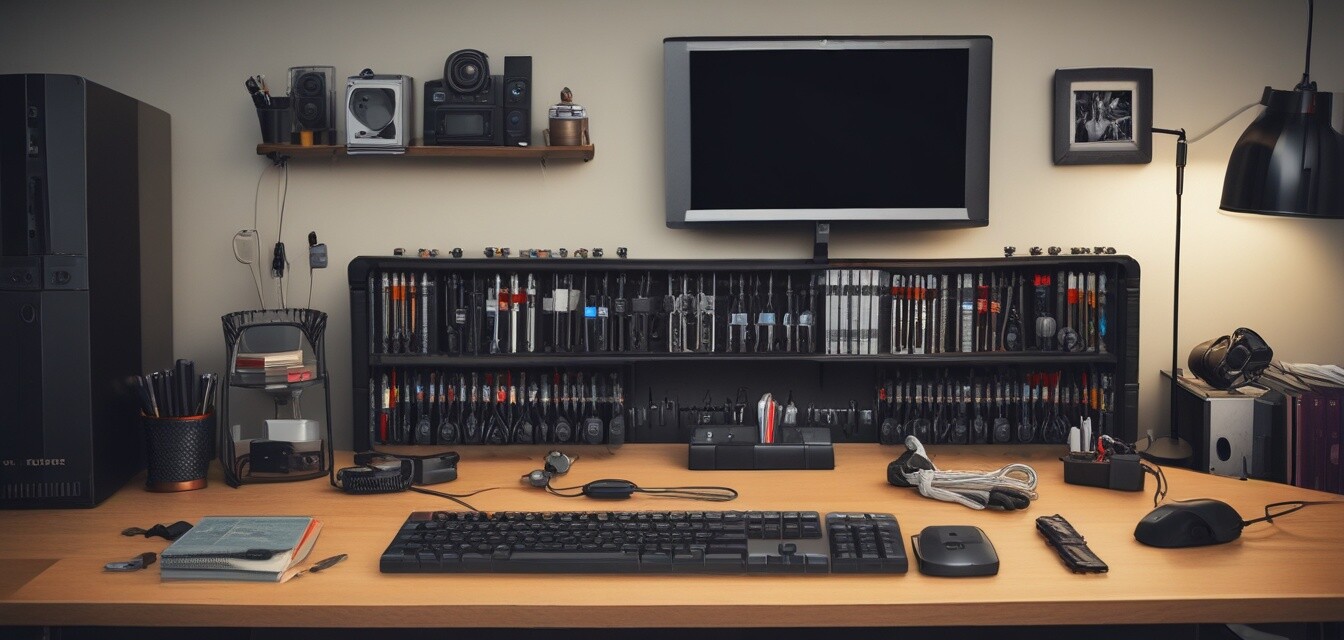
Choosing the Right Cable Organizer
Key Takeaways
- Understand your specific cable management needs based on your workspace layout.
- Explore different types of cable organizers, including clips, boxes, sleeves, and ties.
- Consider installation ease and long-term maintenance when selecting a product.
- A tidy workspace enhances productivity and reduces stress.
- Evaluate the aesthetics of your chosen cable management solution to complement your home office.
In today's world of remote work, maintaining an organized workspace is essential. One of the most common challenges faced by remote workers is cable clutter. With multiple devices, chargers, and connections, managing cables can quickly become overwhelming. This comprehensive guide will help you choose the right cable organizer based on your personal needs, workspace layout, and technical requirements.
Why is cable management important?
Cable management is not just about aesthetics; it plays a vital role in productivity and safety. A well-organized workspace allows you to focus better, reduces distractions, and minimizes the risk of accidents caused by tangled cords. Here's a quick overview of the benefits of effective cable management:
| Benefit | Description |
|---|---|
| Improved Productivity | A tidy workspace minimizes distractions and helps you concentrate on your tasks. |
| Enhanced Safety | Reducing cable clutter lowers the risk of tripping and electrical hazards. |
| Prolonged Equipment Life | Proper organization can prevent wear and tear on cables and devices. |
| Better Aesthetics | An organized workspace looks more professional and inviting. |
Types of cable organizers
There are several types of cable organizers available, each designed for specific needs. Below, we outline the most common types:
- Cable clips & holders - Ideal for holding cables in place on desks or walls.
- Cable organizer boxes - Perfect for hiding power strips and excess cable lengths.
- Cable sleeves & covers - Useful for bundling multiple cables together for a clean look.
- Cable ties & straps - Versatile options for securing cables tightly.
- Cable management kits - Comprehensive solutions that include multiple organizer types.
Cable clips and holders
Cable clips and holders are small accessories that keep individual wires in place. They come in various sizes and designs, accommodating different cable thicknesses. Here's a comparison of popular options:
| Type | Best For | Pros | Cons |
|---|---|---|---|
| Adhesive clips | Desk edges and walls | Easy to install, no tools required | May leave residue |
| Magnetic clips | Metal surfaces | Reusable, easy to adjust | Limited to magnetic surfaces |
| Clamp-on clips | Thicker desk edges | Secure hold, adjustable | Requires some installation |
Cable organizer boxes
Cable organizer boxes provide a stylish way to conceal power strips and excess cables, creating a cleaner appearance. They also offer additional storage for other desk items. Consider the following when selecting a box:
Tips for choosing a cable organizer box
- Ensure the box has adequate ventilation to prevent overheating.
- Choose a design that matches your workspace decor.
- Look for boxes with multiple openings for easy cable access.
Cable sleeves and covers
Cable sleeves and covers are excellent for bundling several cables together. They come in various materials, including fabric and plastic, and can be cut to size. Here’s a breakdown of the options:
| Material | Benefits | Drawbacks |
|---|---|---|
| Fabric | Flexible and easy to cut | May not be as durable |
| Plastic | Sturdy and long-lasting | Less flexible |
Choosing the right cable organizer for your setup
Selecting the appropriate cable organizer depends on several factors, including:
- Your workspace layout and available space.
- The number and types of cables you need to manage.
- Your aesthetic preferences and overall office decor.
Real-world setup examples
To help you visualize how different cable organizers can transform your workspace, consider the following examples:
- A minimalist desk with a cable organizer box to conceal all cords.
- A creative workspace using cable clips to hold cables along the wall.
- A tech-heavy setup featuring cable sleeves to bundle multiple chargers.
Installation and maintenance tips
Once you've selected your cable organizers, proper installation and maintenance are key to ensuring their effectiveness. Here are some best practices:
Installation tips
- Read the manufacturer's instructions carefully.
- Use tools like scissors or screwdrivers as needed for secure installation.
- Place organizers in positions that allow easy access to cables.
Maintenance tips
- Regularly check for frayed cables and replace them as necessary.
- Dust and clean your organizers to keep them looking new.
- Reorganize cables as your setup evolves or changes.
Conclusion
Choosing the right cable organizer is vital for maintaining a clutter-free and efficient workspace. By understanding your specific needs and exploring various options, you can create an environment that enhances productivity and promotes well-being. Remember, a tidy workspace is not just about appearances; it’s about creating a space that inspires focus and creativity.
Pros
- Improves workspace aesthetics and organization.
- Enhances productivity by reducing distractions.
- Promotes safety by minimizing trip hazards.
- Extends the life of cables and devices.
Cons
- Initial costs for purchasing organizers.
- Some products may require installation time and effort.
- Not all organizers suit every workspace layout.
